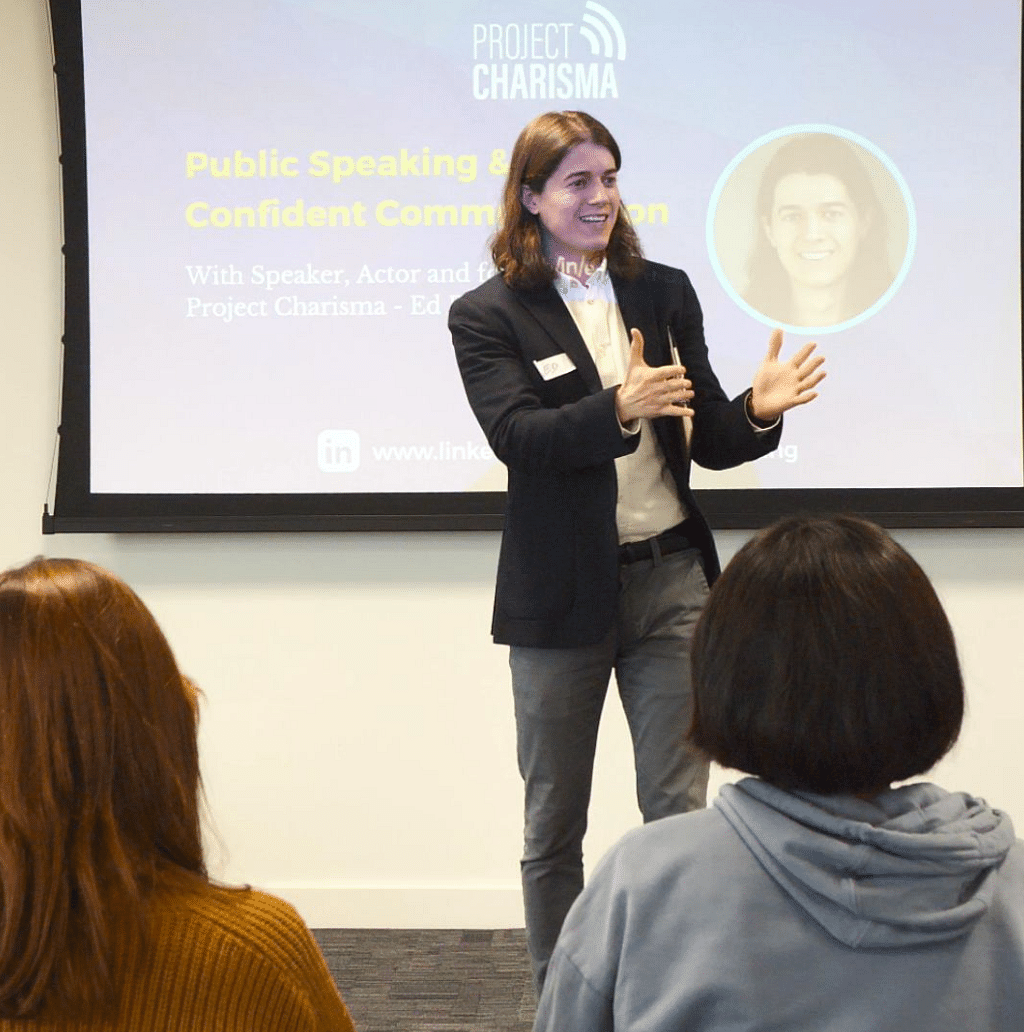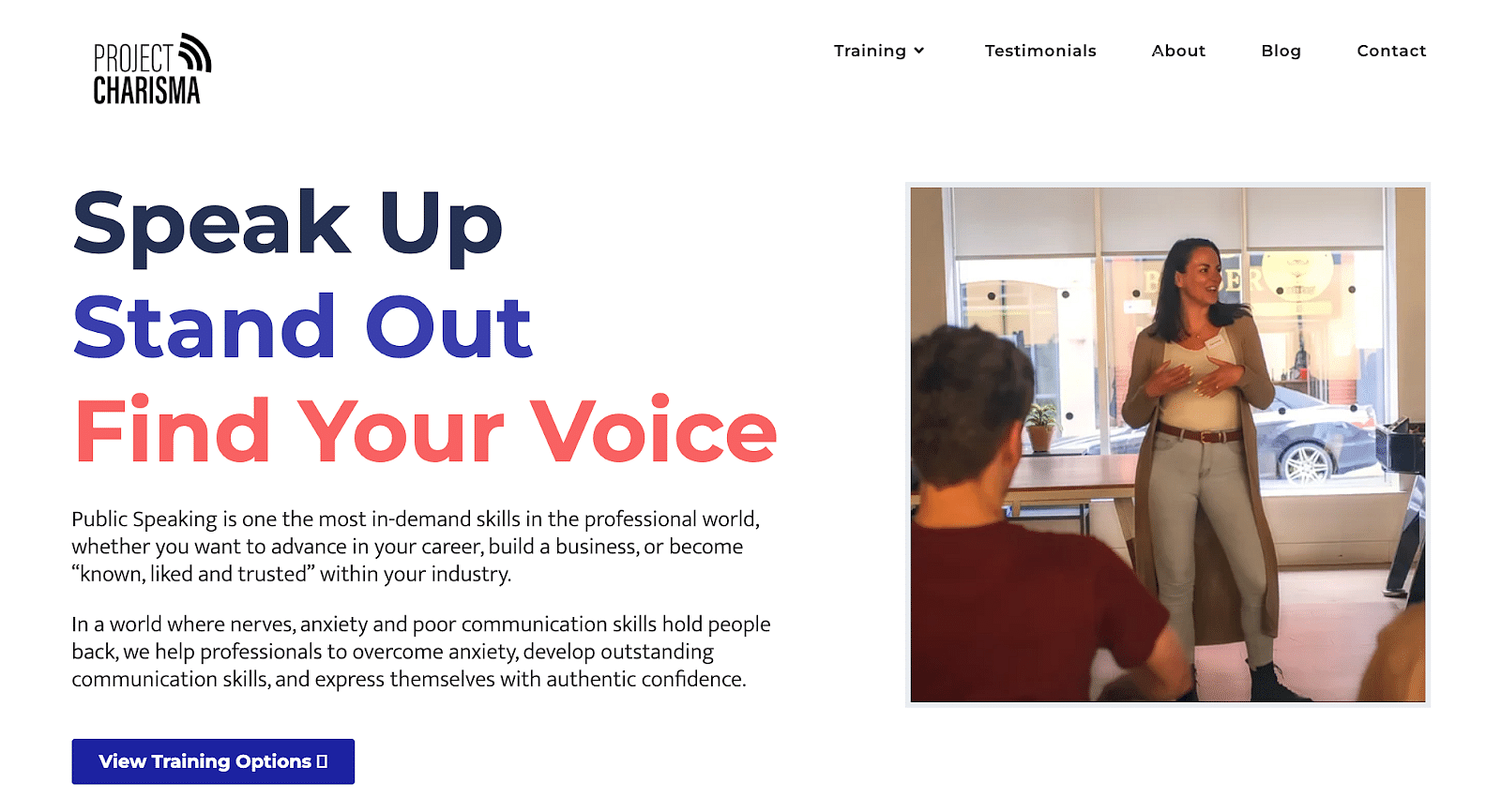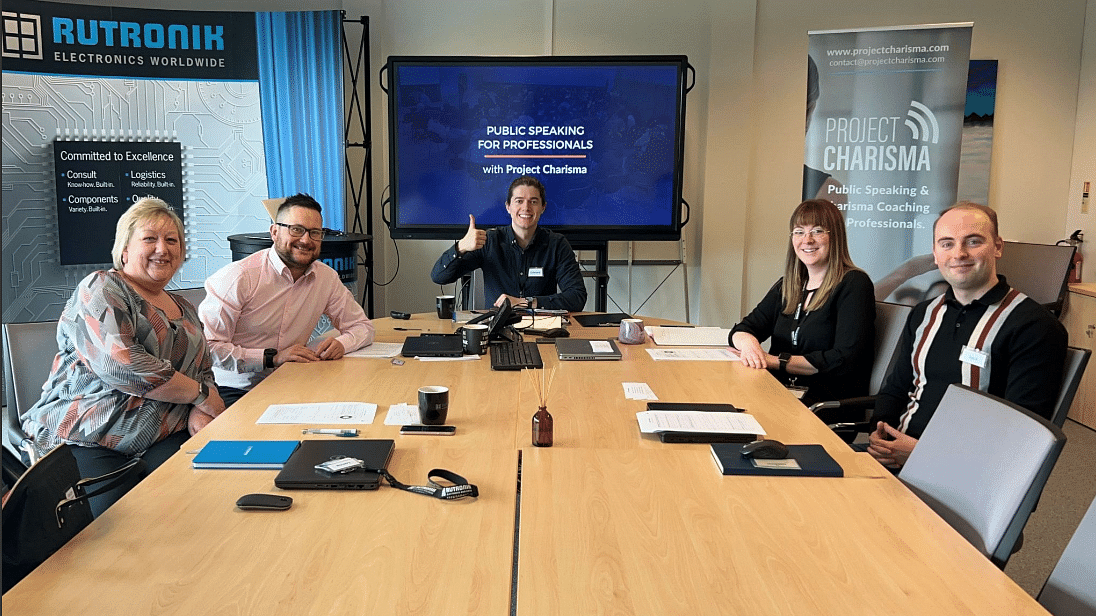
Overcoming his own fear of public speaking, Ed Darling is now coaching professionals through Project Charisma
By Jim James, Host of The UnNoticed Entrepreneur.
Ed Darling was in the new episode of The UnNoticed Entrepreneur to talk about Project Charisma. He discussed how one’s body, voice, and mind could impact their ability to communicate on stage and to have stage presence.
Ed has built this business amazingly from the ground up, and he’s dealing with clients, including the Alliance Manchester Business School at the University of Manchester, Hilti, and a number of other organisations, mainly in the northwest of England.
Image from LinkedIn
From Fear to Profession
A lot of people are afraid of public speaking, especially after the lockdown. Some people have been working from home for the past couple of years, and it really has set people back. They’re experiencing anxiety, fear, or nervousness.
Ed knows exactly how those people feel because he used to have severe social anxiety. When he was at the university in Manchester about 12 years ago, he developed crippling social anxiety almost overnight after having a panic attack in a seminar room.
Right at the moment when he was experiencing a crescendo of anxiety, the lecturer turned to him in front of everyone and asked him to share what he thought about a certain issue. Every single person in the room turned to look at him. He had to stand up, and without saying a word, he just left the room.
That shook him, and he didn’t really understand what had happened.
The next day, when he went to the seminar, the same thing happened. Before long, it had spiralled into an anxiety disorder, where even answering a phone call or buying a train ticket would make him feel overwhelming anxiety, panic, and heart palpitations.
He spiralled down quite a lot. He became very depressed. He felt quite helpless to do anything about it. But eventually, he hit rock bottom and decided that rather than trying to avoid his fears, he needed to turn around and start facing them.
Two of the scariest things he could think of at the time were acting and public speaking. He decided to throw himself at the wall of both of these things, and surely, if he did that for long enough, something would change.
It wasn't an overnight transformation. It wasn't an overnight success story. It took him many years of facing his fears. But eventually, he became a professional actor, performing in theatres around the United Kingdom and on Broadway around Italy.
Image from LinkedIn
He’s also a professional speaker. He became the president of a local speaking club. And all that led him to create Project Charisma, a training company in Manchester.
Their main ethos is about helping professionals overcome these fears that many people have in order to communicate with more credibility, confidence, and charisma, if possible.
Practising Public Speaking
As a start, Ed tries to get people to the idea that public speaking is just a skill. And like any other skill, with practice, they will get better.
People seem to put public speaking on a pedestal because of the fears surrounding it. They think that they were born feeling nervous or unconfident and believe that they’ll never be going to get there. But Ed’s living proof that someone can go from one end to the other with enough practice.
From there, he gets into the practicalities of it. For instance, breathing is a massive issue that many people have at a fundamental level.
There are two types of breath: breathing into the diaphragm and breathing into the chest. One of these connects to an individual’s “fight, flight, freeze” response, which makes them more nervous and anxious. The other connects them to their “rest and digest” response, which calms their system.
Often, Ed does an exercise with people where he gets them to put one hand on their stomachs and one hand on their chests and just breathe normally. He asks them to observe which of the two is moving the most.
He sees many people whose chests are going in and out massively. But that shouldn’t be happening if they’re at rest. It should be their stomachs that are breathing the most.
Ed ties a lot of these basic things into why so many people have a problem with public speaking. But from there, he then focuses on three main areas: the body, the voice, and the mind.
The Body
Image from Pexels
Everyone knows what positive body language is. No one needs to be told to stand up straight, put their shoulders back and not slouch, and use their hands. People instinctively know this
The trouble is, as soon as someone is put in front of an audience, it all goes out the window. They start to cross their arms, fidget with their hands, or shuffle their feet. It’s a nervous, instinctual reaction that people have.
When it comes to body language, one must become more aware of what their body is doing.
Ed uses an analogy from the animal kingdom to explain it, particularly the body language of a squirrel and a lion.
A squirrel is kind of nervous and fidgety. It’s holding its claws close to itself. It's ready to dart off at a moment's notice. On the other hand, a lion is usually taking up lots of space. It’s not trying to hide. It’s rather relaxed. If it’s going to move, it will be very purposeful.
The main difference between the two is that one is a predator, and the other is a prey animal. And their body language is a reflection of that reality. The squirrel has to keep itself small. It has to be ready to pounce away because it’s being hunted from above and below. The lion doesn’t have the same issues, so it can chill out and be very relaxed.
The interesting thing is that humans have both predator and prey hardwired into them. Around 10,000 years ago, people would be hunting but also getting hunted by various beasts.
Ed gives people the idea that they have a squirrel pathway and a lion pathway in terms of body language.
When someone stands up in front of a group of people to speak — whether it’s their peers or a large audience — and they feel that perception of threat, their body reacts much as a squirrel does. They start to close off, close in, and become flighty, fidgety, and nervous.
The real trick is being able to do a “pattern interrupt.” Whenever people find themselves doing any of these negative behaviours, they need self-awareness to notice them. Then, they need to try and do the opposite.
If they’re looking down at the floor, they must bring their eyes up and look at the audience. If their hands are nervously shuffling around, they need to start using them. If they find themselves stepping backwards from the audience, they must step forward.
When people do this, it sends a signal back to the subconscious mind stating that, maybe, there isn’t quite the level of threat they assumed and that they can stand down their reactions a little bit. With that, they will start to feel more confident.
Image from Pexels
It’s clear that people are afraid of judgment. People are afraid of looking foolish in front of their peers and making mistakes. Being shunned out of the tribe is where that fear comes from. If someone 10,000 years ago were pushed out, that would be certain death. That kind of fear is still instinctually very sensitive within people today.
The fear of being judged and ejected is a primal instinct. But for Ed, as soon as someone gets over that initial figure — when they look people in the eyes, take a step forward, and speak more loudly — it dispels that fear quickly. They immediately start to feel more confident. And it creates a positive feedback loop rather than a negative one.
The Voice
After tackling the body element, Ed usually goes into the voice next, which is a very important aspect of public speaking. It’s even more important than body language in some ways, though it’s a bit underappreciated by people who are even quite experienced speakers
There are five key elements of vocal variety that Ed tells people: pitch, pace, tone, volume, and melody. People have more control over some of these than others.
-
Pitch. This is about whether someone has a low or high pitch, and there are little things they can do about that.
-
Tone. On one end of the scale, they can have quite an edgy tone, which sounds slightly harsh. On the other hand, there’s the breathy tone, almost like a therapist’s voice. In a business scenario, someone shouldn’t go too much down this line because it can lack assertiveness.
-
Pacing. This refers to how quickly someone is talking. A big problem that many people have is they simply talk too fast (about 100 words per minute) so they can sit back down as quickly as possible. It’s important to learn how to slow down.
-
Volume. Volume is underappreciated, and it’s not just about being loud enough. It’s something people can use for effect. They can go much louder to get people’s attention and go much quieter to draw them in.
-
Melody. Melody is Ed’s favourite. It’s the opposite of monotone. If someone is logged onto a Zoom call and hears someone say some introduction in one note all along, it quickly turns people off. One must inject more melody into their voice, which means using more of that scale that people all have. Rather than hitting one note on the piano, they must use the whole instrument.
Image from Pexels
The Mind
Mindset is where a lot of people fall down.
In his experience during the past ten years — from having gone through severe anxiety to acting on stage and speaking in public — he’s picked up on three specific mindset shifts that have helped him. One of those is enthusiasm beats confidence.
A lot of people put confidence on a pedestal. It’s hailed as the be-all and end-all: “I must feel confident, sound confident, appear confident. Otherwise, everyone will judge me and think I’m terrible.” This makes people put so much pressure on themselves to be perfect and to come across a certain way.
However, confidence isn’t something to rely upon. One can stand in front of an audience, and no matter what they’re done previously, their confidence will leave them at a moment’s notice. When that happens, they have nothing else to base themselves on.
Whereas enthusiasm is a quality that they can tap into. Even if they feel nervous and uncomfortable, they can choose to focus on enthusiasm. Any audience will forgive them for looking nervous if they feel that enthusiasm.
Getting Project Charisma Noticed
Ed originally had the idea for Project Charisma quite a few years ago, together with two good friends. They were passionate but struggled to get anywhere for the first five years. They were putting on free events and doing low-paid things. They were continually struggling.
Then, a couple of years ago, his friends both took a step back from the business and decided that it wouldn’t work. Ed had the choice of whether to carry on or leave it there as well; he chose to carry on and give it one more shot.
Since then, Project Charisma has finally started to pick up and go places.
He learned from it that sometimes, a business only needs a one-direction and a one-person setting rather than having too many people pulling into too many different directions.
Image from Project Charisma
To help him get the business off the ground, it was really about having a decent website. The key for his business is building up search engine optimisation (SEO) and ensuring that the branding is on point and tailored to the right niche he wants to target. For now, he’s settled on professionals as his niche.
Project Charisma’s website is all Ed’s own work on WordPress and Elementor. He learned how to do all that, and he did all the design and the colour branding.
When he first started the business, he had little money. So, he bootstrapped it.
However, doing that might not be for everyone. He could pick up a web developer who could do a much better job than he did. But for him, if someone can do good enough, to begin with, then doing things on their own can sometimes be the best option.
Ed has also been using Daniel Priestly’s Score App for the past couple of weeks. He hasn’t had a lead magnet until now, and this app works as a good lead magnet because people can get instant feedback and analysis on their public speaking skills and strengths. On his part, he could get their email addresses. Everyone’s a winner.
As a fan of Daniel himself, who is a great entrepreneur, he’s simply happy to try the product.
His Advice for UnNoticed Entrepreneurs
When Ed was still in the wilderness, trying to get the business off the ground, he and his business partners Dan Riley and Chris Delany tried to put on some public speaking events in Manchester. It’s the old idea that if someone builds something, people will come. But, in their case, they built it, marketed it, and put money into advertisements, yet people didn’t come.
Image from LinkedIn
One of the lessons he learned is that if an entrepreneur is going to spend money on advertising and marketing, they have to have all the other things in place. They must have a solid website, credibility, and testimonials to back it up. If people see all that, then they might convert. Without all this, an entrepreneur is just throwing their money away.
Though it sounds cliche, Ed also advises entrepreneurs to do a fantastic job for the people before them, serving them as much as possible. They must try to help them with whatever their problem is. In doing so, these people will leave great testimonials.
This is the kind of groundwork they must put in place: doing a great job for the person right there in front of them.
To learn more, visit www.projectcharisma.com.
The UnNoticed Entrepreneur podcast is sponsored by Prowly, the all-in-one software for leveraging PR activities. Boost the media relations game for your business - get more coverage while saving time and money on everyday tasks.
This article is based on a transcript from my podcast The UnNoticed Entrepreneur, you can listen here.
Cover image by Monica Silvestre on Pexels








